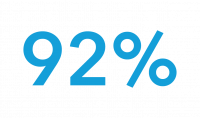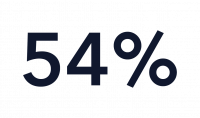Guide to Ecommerce Marketing for DTC Brands in 2023
What is Ecommerce Marketing?
Ecommerce marketing is an essential way for businesses to cut through the noise of the internet by utilizing digital (and sometimes offline) tools that drive traffic to your online store.
The world of online consumerism is a busy place, and we all know how hard it can be to get a product or service the attention it deserves. The promotional tactics used in ecommerce marketing allow you to tap into the power of the internet and drive leads to your website.
Most importantly, a successful ecommerce marketing strategy should utilize different marketing channels in balance. Whether it’s a Google Ad or an Instagram campaign, everything should work together to unify your brand image, promote your key campaigns, and make your ecomm buyer’s journey as engaging and easy as possible.
Navigate this page
How to Get Started in Ecommerce Marketing
With so many digital tools and channels available, getting started on your ecommerce marketing strategy might seem easier said than done. Here are some of our top tips to get you started in ecommerce marketing:
- Define your target audience: Understand who you should be directing your marketing efforts towards. This is key to informing every decision you make.
- Do your research: Research your audience’s online behaviors: where are they most active, and at what times or days? What are their age groups, professions, locations. Knowing this will allow you to tailor your promotional material so it’s relevant and engaging to the right consumers.
- Identify your unique selling proposition (USP): Think about what it is that sets you apart from your competitors, or how your product better fulfills the needs of your audience. Whatever it is, you can use this USP to unify and drive your marketing campaigns.
Before you can focus on strategizing, you must first ensure you have a strong foundation:
How to start an ecommerce company
If you want to successfully launch your business into the ecommerce universe, there are a few things you need to consider. Carrying out market research and evaluating market viability are key to figuring out whether there’s a gap for your product, but you should also think about whether there’s a niche category you can exploit, how you compare against competitors, and which is the best ecommerce platform for you.
How to start an ecommerce site
Before you can even think about marketing, you need to create an engaging and responsive site. Whichever platform you choose should provide your customers with an intuitive shopping experience so that they feel compelled to return. The most popular way of doing this is using an ecommerce plugin, like BigCommerce or WooCommerce, on a CMS like WordPress.
How to take your existing retail business online
It may be that you have a brick-and-mortar store with an existing product, brand, and audience, but haven’t yet made the move into online ecommerce. In this case, as you create your site, it’s important to understand how your offering will translate online and feel like it’s coherent and consistent with your offline brand.
So, you’ve set up your website, defined your branding, crossed all the t’s and dotted all the i’s. There’s only one thing left to do: create your ecommerce marketing strategy! Most marketers will already know what a good marketing campaign entails, so how does this change when you’re advertising an ecommerce store?
What is an Ecommerce Marketing Strategy?
Unlike traditional modes of online marketing, an ecomm marketing strategy should identify the best marketing and advertising channels for ecommerce, and run coordinated campaigns across them all (or at least, the ones you find work best for your business) so they achieve the same goals: to drive traffic, convert site visitors, and retain customers.
Also known as holistic ecommerce marketing, this strategy should focus on how all of your different campaigns relate to each other and promote your main message. Doing this will make your buyer’s journey a lot clearer by eliminating the risk of misleading campaigns or click-baity ads. It also provides coherence and consistency for your customers – they will hear or see the same message repeatedly, and this will help it to stick.
In general, an ecommerce marketing strategy should coordinate some or all of the following channels and tactics:
- Social Media: Ensure that your brand’s message, image, and tone of voice is clear and consistent across all channels so that you’re easily recognizable. This applies both to paid and non-paid social strategies.
- Email Campaigns: Integrate these with social media by including shareable social links in the email body, featuring relevant social profiles, or using social analytics to inform your material.
- Content Marketing: Feature useful content from your website in relevant campaigns, e.g. including links on socials or in emails to a ‘How To’ guide about your products or services.
- Display Advertising: Maintain visual and messaging coherence across all your marketing campaigns by unifying the graphics and words used in your digital display ads, including banners, landing pages, images, and text ads.
- SEO: Optimize your website according to the results of your marketing campaigns will allow you to fulfill the consumer’s needs, enhance UX (user experience), and rank better because of this.
- Video Content Marketing: Video is extremely powerful. The goal of video content marketing is to convert browsing consumers into site visitors and customers, and from there to convince them to become repeat buyers.
- PR: Use PR tactics to drive brand and/or product awareness through media placements or influencer partnerships.
- Remarketing: Target potential customers you know have looked at your products with paid social and Google Ads remarketing.
- Paid Search: Boost website traffic using search engine marketing; paid search through a variety of search engine platforms such as Google and Bing.
How Do I Create a Successful Marketing Strategy for Ecommerce?
If you want an ecommerce marketing strategy that succeeds, it’s not only important to leverage all the digital tools you have at your disposal, but to also do this in a systematic and productive way.
It can be easy to lose control of your marketing budget when you’re in a bid to win a place on top of the SERPs (search engine results pages), so having clearly defined goals and a solid plan of action is key.
The first thing you can do to create a successful marketing strategy for your e-commerce store is employ SMART marketing. In a nutshell, this provides a guideline for goal-setting that will allow you to track and achieve your business objectives faster.
- Specific: What is it that you want this strategy to specifically achieve?
- Measurable: How will you track and measure your results, or use them to assess progress?
- Attainable: Are your goals realistic and well thought out? Do they manage expectations?
- Relevant: Do your objectives relate to your brand, current industry trends, or your audience?
- Timely: Have you broken your goals down into achievable, yet timely deadlines?
Once you’ve framed your goals like this and have a clear game plan, it’s time to start thinking about the different promotional techniques and tactics you can use. Here are eight tips to keep in mind when creating a successful ecommerce marketing strategy:

Make sure you’re targeting the right platforms at the right time so that you can engage your target audience more effectively

Consider retaining more customers by introducing loyalty programs, like rewarding customers for making a certain number of purchases

Coordinate all of your marketing efforts so that they’re focused on achieving the same goal in the same way

Use referral marketing techniques to encourage customers to recommend your product in exchange for a reward, like a discount

Look out for affiliate marketing opportunities with other brands or companies. This is a great way to get your product extra mileage

Create personalized email campaigns for new products, how-to articles or behind-the-scenes content

Run Google Ads or pay-per-click (PPC) campaigns to reach a bigger audience and drive targeted traffic to your site quickly and efficiently

Leverage the marketing funnel so you know what each channel’s role is in meeting your goals and convey the right message. You don’t want to introduce a loyalty program to someone who is in the awareness phase of the funnel and has just heard about your brand.
What Are the Best KPIs for Ecommerce?
Not every site metric will be helpful at growing your online store because vanity metrics, like dwell time or pages per session, though making you look good, ultimately provide little insight into how your product is actually performing. In order to have a successful online store, you need to track your goals and objectives with metrics that are relevant to your vision.
That said, here are 10 of the best ecommerce KPIs you can use:
- Conversion rate:Allows you to see how many leads are converted into paying customers, giving you a direct indication of performance
- Cart abandonment rate:Tells you how many people leave your online store without completing their order
- Average order value (AOV):You can use this to inform your pricing. Revenue growth also increases relative to AOV
- Product affinity:Shows which products are commonly bought together, allowing you to market popular product bundles
- Revenue per visitor (RPV):Tracks how much money is earned every time a customer visits your website
- Customer acquisition cost (CAC):Weighs things like advertising costs against customer growth to determine how much it costs to acquire a new customer
- Customer lifetime value (CLV):Uses data from CAC and customer revenue to estimate the net profit a single customer brings to your business
- New and returning customers:Identifies which orders are from new customers and which are from repeat customers
- Traffic source:Shows you where most of your traffic is coming from so that you can focus your marketing efforts in the right places
- Inventory management:See which products are selling out fastest to gauge product popularity, as well as to keep up-to-date with restocks
The Importance of Buyer Personas in Ecommerce Marketing
In ecommerce marketing, buyer personas are important because they allow you to look at things from your ideal customer’s perspective. This has a lot of positive knock-on effects in terms of how you tailor your marketing strategy and refine your product or website to meet specific needs.
Put simply, buyer personas are detailed blueprints that represent the characteristics of your ideal customer. They tell you:

To get started on creating buyer personas for your business, you need to get stuck into some research and gather as much information as you can. The key here is understanding who your ideal customer is, what they respond to, and what they want most.
Here are some ways you can approach creating a buyer persona for ecomm marketing:
- Compile real-word data from your current customers using tools like Google Analytics, social media insights, or your own customer database
- Find out what’s being said about your business, industry, or competitors via social listening, which involves monitoring hashtags and relevant keywords
- If you use forms on your site, you can include specific form fields to gain important information about site users, e.g. where they heard about you or what stage of life they’re in
- Incentivize your customers to complete questionnaires about your company or product – this gives you the chance to ask some more personal, in-depth questions
- Perform primary research to glean insights directly from your target audience
Once you have gathered as much information as possible, you can begin using this to flesh out the buyer persona of your ideal customer. When doing this, think about their background, motivations, pain points, and identifiers so that you can create an accurate and detailed blueprint. You can then use this to reframe your business objectives according to how they align with your buyer personas.
Your brand communications should always strive to answer the target audience’s question: what’s in it for me? By understanding exactly who they are, their goals and their needs, you’ll be able set your brand messaging up to resonate with your target audience.
How to Build an Ecommerce Marketing Plan
Before we get into this, let’s first clarify the difference between an ecommerce marketing plan and an ecommerce marketing strategy. While the strategy is high-level and gives a broad overview of objectives, KPIs, and channels, as well as what success might look like, a marketing plan drills down into the ‘how to’. What do you actually do, and what are the tactics you use, to achieve the objectives outlined in your strategy?
The marketing plan answers questions like, “how are we going to put our marketing strategy in play, and what are the specific details for each of our channel strategies to bring our ecommerce plan to life?” Specific ecomm campaigns start to become fleshed out. For example, what does your branding campaign that will raise brand awareness look like? How will your sales and promotional campaigns work? What will your strategic partnerships be? How will you run your seasonal product launch campaigns?
Implementing a solid ecommerce marketing plan is do or die because without one, it can be difficult to stay on track and achieve your goals. Given the unprecedented boom in online shopping in 2020, it’s more important than ever to build a well-thought-out plan that will let you achieve your business objectives in a strategic, timely, and cost-effective way.
Here’s how you can build an ecommerce marketing plan that drives success:
- Get advice from industry experts to understand the best practices, platforms and models
- Write a concise overview of your plan so that you know exactly what you should be doing
- Clearly outline your business goals and objectives so that you keep focus in the right places
- Consider which ecommerce KPIs you can employ to achieve these specific objectives
- Prepare a mission statement that outlines your vision and facilitates easier decision-making
- Research your audience, gather real-world data about them, and create buyer personas
- Conduct research into pricing and how you can bring value to your customers
- Create a lead-generation strategy that takes all of the above information into account
How to Measure Ecommerce KPIs by Channel
To run a successful ecommerce marketing campaign, it’s not enough to just be aware of metrics – you have to continually measure ecommerce KPIs by channel so that you can measure the success of your ecommerce website marketing and make improvements to key areas.
Each marketing platform you use performs differently and so will require different KPIs. Here’s how to measure ecommerce KPIs for social media channels:
- Engagement:Use social media insights to gauge which pieces of content get the most likes, saves, shares, and comments. This will give you an idea of what your audience responds to
- Overall reach:Use analytics on social media to track follower growth and overall impressions, and even traffic data to your website, i.e. how many people click your bio link
- Lead generation:To gain an insight into how many of your social media followers are actually converting into paying customers, you can use social media management platforms like Hootsuite, SproutSocial, or Oktopost, which track social lead data.
If you’re running a Google Ad campaign for ecommerce, KPIs can be measured straight from your dashboard. Some of the best KPIs to measure here are:

Click-through-rates (CTR)
how many people actually clicked on your ad

Cost per conversion (CPC)
how much money you spend for every conversion

Average position
how high up on the SERPs your ad is being placed

Quality score
how relevant and reliable your ad is to those who have clicked on it
What Are the Different Types of Ecommerce Marketing?
There are many different types of ecommerce website marketing that you can utilize to increase sales for your ecommerce brand. As we touched on earlier, taking a holistic marketing approach to ecommerce by coordinating between all the different strategies is crucial for a clear and consistent campaign.
So, if you’re wondering how to market an ecommerce brand, here are some of the different types of ecommerce marketing:
- Social media advertising to improve brand awareness and engage with your audience
- Content marketing to establish authority and create an affinity with the consumer
- Email campaigns to communicate with customers, nurture leads and drive conversions
- Search engine optimization (SEO) to ensure that your online store is seen by more users
- Optimized web designs that are responsive and provide an intuitive user experience
- Google Ad campaigns to improve lead generation by creating targeted advertisements
- Buzz marketing, including influencer marketing, to stir up conversations about a new product, leading to more traffic
- Conversational marketing to improve the buyer’s journey, such as with the use of live chats
- Augmented marketing to add more value to the product, e.g. including a free item
- Affiliate marketing, referral marketing and reward schemes to facilitate customer loyalty
Using Social Media for Ecommerce
The power of social media is growing everyday, with 50% of the world’s population now actively using it. Yes, you read that correctly – using social media for ecommerce widens your reach by about 3.8 billion people. If you still need persuading, here are some statistics about how powerful social media can be as an ecommerce tool:

Social news feeds are responsible for around 52% of online brand discovery

After seeing an Instagram ad, 92% of users say that they either followed the brand, followed their bio link, or purchased their product

When looking for products, 54% of internet users trust social media to inform their decision

49% of consumers will trust a product or brand more if it’s been endorsed by social media influencers
On top of all this, new social media features, like Instagram Shopping, now make it possible for brands to sell their products on primary social platforms. This type of social e-commerce allows you to get your products in front of a wider audience, while inviting consumers to engage with you in a way that’s more relevant and convenient to them.
When deciding how your business can use social media and e-social commerce to promote your online store, make sure you’re targeting the right platforms for your audience. You may be tempted to focus your marketing efforts on the primary social platforms, like Instagram, Facebook or Twitter, but if your leads don’t use these then you’re unlikely to see a good ROI.
Here’s how you can find out where on social media your audience likes to hang out:
- Include form fields on your site’s checkout page that ask customers where they found you
- Do some research into your industry competitors and what social media platforms they use
- Think about your target demographic and which platform is most attractive or useful to them
How to Run Google Ads for Ecommerce
Ecommerce ads on Google are usually found at the top of the SERPs, making sure that your product or service is seen by as many people as possible.
There are five categories of ecommerce ads that you can run on Google, including search, shopping, video, display, remarketing, dynamic ads and universal app ads – but we’ll get into these more later.
For now, here’s a quick six-step overview on how to run Google ads for e-commerce (but as a point to note before you get started, while it’s easy to list out a guide like this, actually running a Google ads campaign can be pretty complex, and it’s recommended to find an expert partner if you’re thinking of launching a paid search strategy and don’t have any experience):
- Set up a Google Ads account if you don’t already have one
- On the dashboard, choose which campaign type you’d like to create and then define what you’d like to optimize it for, i.e. whether it’s being used to improve sales, leads, or site traffic
- From here, you can define your budget and target audience, set your bids, choose your keywords, create ad groups and, finally, write your ad
- Once you’ve reviewed everything and hit publish, you’ll be able to analyze your ad’s progress using the campaign data on the Google Ads dashboard
- With this data, you can track metrics like conversions, CTRs, and impressions. You’ll also be able to customize the way this data is displayed so you can track the most relevant metrics to your business, define the date range, and see important trends emerge
- Keeping this data in mind, you’ll then be able to refine your ad campaign and compare the new ads against the old ones to gauge audience responsiveness
Ecommerce Email Marketing
Another type of e-commerce marketing is creating email campaigns to create an ongoing dialog with brand fans, increase customer loyalty, and drive sales. Ecommerce email marketing is potentially critical to the survival of your online store because it allows you to communicate with your customers directly, rather than relying on unpredictable social media algorithms or fastidious web crawlers.
Email marketing is especially important for small to medium ecommerce businesses who are still growing their customer base. Not only is it an excellent way to increase customer loyalty, email marketing also has a high ROI because of how it engages leads.
Ecommerce Email Marketing Tips
Using email campaigns in your ecommerce marketing strategy is a great way to convert leads into valued customers. Here are our top eight tips on how to use ecommerce emails successfully:
- Find the right email platformto serve the needs of your business.
- Grow your email lists: Include an email newsletter sign-up formon your website so customers already have an affinity with you when they receive an email. This is also a great way to gather useful data.
- Personalize your email to create a rapportwith the recipient. You can do this by recommending products based on their interests, or even simply by using their name.
- Use high converting email templates that immediately engage the customer with things like irresistible subject lines, an attractive design, and CTAs that link to your online store.
- Segment your audience according to demographicsso that every consumer is catered for and feels receptive to your message. You can do this by referencing your customer database.
- Take advantage of content marketing to make emails as tempting as possible. This can be things like helpful blogs about your product, humanizing pieces of brand journalism, or even surveys and quizzes.
- Include offers and discounts to create an air of exclusivity about the email, encourage CTRs, and boost conversion rates.
- Track the success of your email campaigns by analyzing relevant metrics, including click-through and conversion rates, as well as list growth, number of shares, and overall ROI.
Ecommerce Content Marketing
Ecommerce content marketing is a way of utilizing promotional material to guide customers to your online store where they’ll (hopefully) make a purchase.
While content marketing is a crucial part of promoting your online store, you must approach it from an ecommerce perspective so that you keep sight of your business goals and continue driving conversions for your brand. This means that your ecommerce content strategy must always link back to boosting traffic and converting leads.
To create ecommerce content that drives conversions, refer back to your marketing plan or mission statement to ensure that everything is coordinated. It’s also important to keep your target audience in mind so that you can cater your content to their tastes and online behaviors.
That said, there are a few types of ecommerce content marketing that you can explore:
- Helpful or instructional blogs that give the consumer insight into how your product works and how it will meet their needs
- Pieces of brand journalism, like origin stories or behind-the-scenes content, help to humanize your brand and establish trust
- Original product photos that are well-shot and realistic are critical if you want to demonstrate quality to the consumer
- 360 product viewers are also very popular because they give the audience an almost tangible experience of your product
- Videos that introduce visitors to the team, offer information about the product, show footage of the creation process, or even just answer popular questions
- Customer stories, like testimonials, reviews or case studies, can be used to convert customers nearing the end of the marketing funnel
- Interactive content like quizzes, widgets, and even interactive infographics can also be used in ecommerce online marketing to keep leads interested in your product
Ecommerce Tips
No matter how long you’ve been running your ecommerce business, driving conversions will always be an uphill battle. But with a few trade secrets up your sleeve, you can optimize your approach to ecom marketing and keep your business at the forefront of this digital age.
Here are our top 15 ecommerce tips that will support growth and facilitate conversions:
- Train yourself to look at your business and product from your customer’s perspective
- Talk to your audience on all platforms, answering their questions and building rapport
- Leverage your customer base by incentivizing them to recommend you to friends
- Exceed expectations and build confidence by under-promising and over-delivering
- Find and exploit your niche – figure out why your product is unique and run with it
- Sell the experience your product brings over the technical features of your product
- Satisfy the instant gratification mindset of internet users by rapidly fulfilling orders
- Employ holistic or omnichannel marketing techniques to create a seamless journey
- Never stop researching your target audience; stay up-to-date with their changing behaviors
- Implement a points program or reward system to keep customers coming back for more
- Make sure you have dynamic, memorable, and recognizable branding, both on and offline
- Grow your business with user-generated content, like competitions related to your product
- Make sure your strategy is driven and refined by data, and that your goals are clear
- You can create urgency for products by marketing them as ‘limited’ or ‘low in stock’
- Remember to show appreciation and thank your customer!
How to Increase Sales Through Ecommerce Marketing
There are many ways you can use ecommerce website marketing to increase sales. At its core, ecommerce online marketing is about driving traffic and conversions, you just need to figure out which strategy works best for your business. These are some of our favorites:
Upsell
The reason fast-food restaurants or movie theatres constantly upsell their products is that it’s the most effective way of earning more profit from a customer without spending any extra money.
Integrate social media
Advertise your products on the social platforms that your audience uses the most. You can also make use of things like Instagram Shopping to drive more sales because it makes the process more accessible.
Send reminders about abandoned carts and abandoned product pages
Did you know that the average cart abandonment rate sits at around 69%? This represents a lot of lost opportunity. You can recover some of this by sending out reminder emails to customers on your database who have an abandoned cart, reminding them of the goodies that are waiting for them in your store.
Make use of email campaigns
Organize your email marketing to include welcome emails, regular product releases or updates, birthday messages, holiday greetings, anything that will keep you in regular communication with your consumers.
Ecommerce Marketing Examples
To show you the real power of ecommerce marketing, we’ve put together three real-life examples:
 Monthly subscription services and the power of personalization
Monthly subscription services and the power of personalization
Companies like Birchbox, Bloombox Club, or Graze embody how effective it is to personalize the customer journey. Their products are tailored to the needs of individual customers and include customized notes or messages that make the consumer feel valued.
Another ecommerce marketing strategy that monthly subscription services often use is freebies. Not only does this get people talking and tempt them into buying from you, it also demonstrates that you have faith in your product and value your customers.

Dollar Shave Club and the power of branding
Dollar Shave Club is another monthly subscription service that champions the use of branding through video marketing. The major component of their ecommerce marketing strategy was using funny, quick videos that explained their model, created a strong brand identity, and addressed their audience’s motivations and desires.
This company has shown time and time again how important it is to have a strong and clearly defined brand identity. Once you can confidently say who you are, what you offer, and what value you’ll bring to the customer, then audiences will be more receptive to your campaign.
 Beardbrand and the power of awesome content
Beardbrand and the power of awesome content
Beardbrand is a men’s grooming company that leverages compelling content in order to keep customers coming back for more. Their ecommerce content strategy includes helpful articles that relate to their audience, but not necessarily their products, like tips on how to style different types of hair, what the best beard trends are, and even a guide to the coolest hat styles.
They back all of this up with an informative YouTube channel that has over 1.6 million subscribers, demonstrating how using valuable content to attract relevant leads is one of the most effective ways of promoting your ecommerce business.
How to Manage Ecommerce Marketing
There are many ways you can use ecommerce website marketing to increase sales. At its core, ecommerce online marketing is about driving traffic and conversions, you just need to figure out which strategy works best for your business. These are some of our favorites:

Research, research, research
We can’t stress this enough. Find out everything you can about the company, its products, and even its history. Boil these down to the stone cold facts so that you can more easily address them when creating your strategy.

Strategize
Know what your company’s business objectives are, what value your products or services can bring to which audience, and how you can best reach this audience online. You can then begin developing your ecomm marketing strategy according to how it satisfies these areas.

Set and measure KPIs
Remember to set KPIs and, possibly more importantly, use them. Metrics provide valuable data about how your campaign is performing and where it needs improvement. KPIs also ensure that you stay on track with what it is you’re trying to achieve.

Putting it into action
When your ecommerce campaign is up and running, work with your web developers, SEO managers, and content creators to ensure that everything is running smoothly across all channels – remember, creating a seamless buyer experience is key.